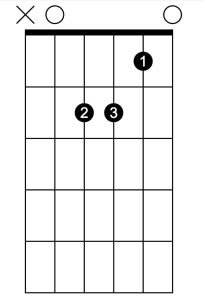Changing between chords can be challenging for any guitar player. No matter how long they have been playing.
Below you will find strategies to make chord changes easier. These methods will improve your chord changes and make playing guitar more fun.
Some of these strategies will work immediately, but not all chord changes are the same. Certain chord changes are trickier than others.
I encourage you to try all these methods and use what works best.
Most importantly, practice slowly. Slow practice makes us aware of our finger movements and improves the accuracy of out fretting hand.
Table of Contents
- Practice the Left-Hand Alone
- The Guide Finger
- The Lift and Shift
- Breaking Things Down (For Chord Progressions)
- Wrapping-Up
Practice the Left-Hand Alone
Take the right hand out of the equation and focus on the movements of the left hand. This lets us zoom in on what our fingers are doing and can make our chord changes more accurate.
This type of practice works best when done slowly. My suggestion is to think exactly what fret a finger is playing and what fret it is moving to.
You can use this method with a full chord, but it is also useful to practice with one finger at a time. Adding one finger at a time reinforces clean shifts and proper finger placement on each fret.
You can polish up this method by moving all the fingers at the same time. (The Lift and Shift)
The Guide Finger

The simplest way to change between two chords is to use a guide finger.
A guide finger is used to connect two chords that share a specific note. One example is the C major chord and the A minor chord.


In the diagrams, we can see that the 1st finger plays the same note in both chords. That means we can use that note to switch between both chords.
If we break down the steps that go into using a guide finger to switch between both chords, you get:
- Play the C major chord,
- lift fingers 2 and 3,
- place fingers 2 and 3 to make the A minor chord,
- play the minor chord.
This is an excellent option to use whenever you have two chords that share at least one note.
The Lift and Shift

*This strategy works best when we have two chords that do not share a note.
Imagine a plane taking off and landing. Then, imagine a helicopter taking off and landing. Both go into the air but take different “routes.”
The plane moves faster and faster on the pavement until it takes off. When it lands, it hits the pavement and then begins to slow down.
The helicopter goes straight up into the air, moves, then descends onto the ground. We must imagine our hand as the helicopter. Not the plane.
When chord changes don’t share a note, make sure that you are directly lifting the hand off the fretboard. Then be sure all the fingers land at the same time.
Accurate taking off and landing of the fingers is what will make these chord changes easier.
- Lift,
- shift,
- prepare the chord (make the chord shape in the air),
- and bring the fingers straight down.
Break Things Down (For Chord Progressions)

If you have a chord progression that includes many chords, simplify things, and focus on one chord change at a time.
Let’s take a chord progression such as C major, F Major, G Major, and C Major.
Moving through all these chords can give us loads of trouble. So, we can take things apart and practice moving only between C major and F major. Then move onto F Major to G major and so on.
After putting in the work on smaller sections, we start putting it all together and it will be easier.
- Break down the chord progression,
- slow it down and practice the movements,
- then put it back together.
Wrapping Up
Any of these four strategies will help to make chord changes easier. Don’t hesitate to experiment and try each of them.
Sometimes we have moments where everything clicks, and we get the chord change easily. Other times, it can be a lot of hard work to make the chord change sound good. That is just the way it is on guitar.
On the bright side, this type of problem-solving prepares us for the next time we encounter a tricky chord change.
* If you have tried these out and something is still giving you trouble, feel free to get in touch with us.